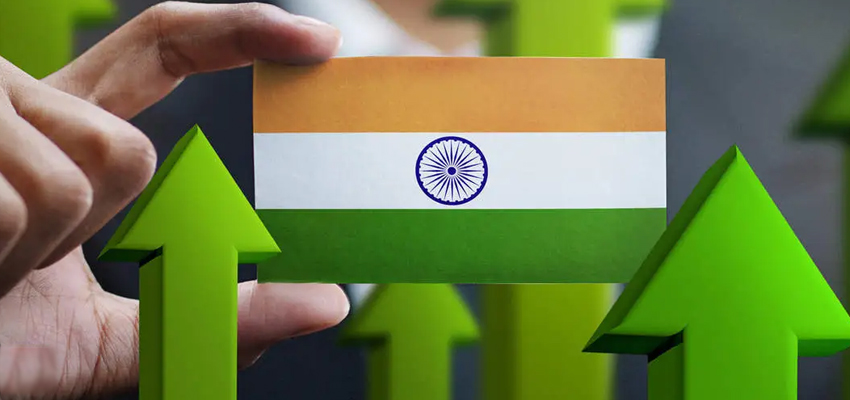Is a 50 trillion-dollar India achievable?

It’s never too late to build a strong Indian economy and benign global presence, but India needs to chart-out a strategy that would outdo China. Here’s how
Our recent policy paper advocating strategic patience and many policy initiatives to fight the China challenge and emerge as a stronger nation in future has met with much appreciation from diplomats, politicians, academicians, think tanks and industry chiefs, who have resonated with the thoughts we have detailed in the paper.
One of our hypothesis that India can grow at eight per cent per year for the next twenty years while China, faced with a hostile world and its own demographic disadvantage might slow to four per cent has led to some excitement and some degree of cynicism. Excitement because that growth outlook could see China growing from 14 to 53 trillion dollars in GDP by 2041, while India could grow from just under three to 40 trillion. From there, a 50 trillion-dollar India on the hundredth birthday of our independent nation – 2047 is just a few more steps.
The cynicism too has come from many quarters including, some recently retired luminaries of the central government. Do we seriously believe they ask, that a selfish world used to highly efficient low-cost supplies from China will suddenly stop the party and explore alternative sources in a hurry? And the five trillion-dollar GDP by 2024 is clearly not achievable, so what is the new date? With the confusing relationships between states and government as seen in the ongoing vaccine crisis, they ask, if we can ever get our national act together, build production capabilities and infrastructure in the key industries and present a truly viable preferred sourcing and supply chain centre for the world? Some of the points we have made in the paper are worth repeating to assuage these doubts.
First, India must reduce its overwhelming dependence on China in core areas like rare earth and telecom. Avoiding any external country technology architecture in future critical areas like 5G and mobile telephony will be critical and generating domestic design and manufacturing in telecom, consumer electronics and the core Information and Communications Technology layer will truly build 'Atmanirbhar' in the country. And finally, there are myriad industry opportunities where India can potentially be a world leader-pharmaceuticals, chemicals, automotive, even agriculture. For this, the stand-off between the farmers and the government should end and we build a consensus on adding large scale export-oriented production of grains, fruits, and organic produce to our predominantly rice and wheat farmer output.
Internally, our focus through the National Education Policy should be to invest much more in higher education, research and innovation and extensively deploy technology in enabling higher levels of capability for individuals and organisations.
Second, we need to engage with China’s neighbours and ensure we give them alternatives beyond the one belt one road initiative which is seeing China emerge as a real alternative to the US to keep economic engines firing in countries in the ASEAN. There are at least 20 countries with democratic inclination where real agreements beyond hollow trade pacts must be struck and a joint future created over the next decade and more.
Third, we must substantially increase our level of engagement with our own neighbours. Why are we perpetually reacting to China created barbs with Nepal, aggression in Bhutan, a veritable takeover of Colombo’s port area and of course, complete domination of Pakistan? Will Bangladesh be our only credible partner in South Asia or can the hand of democratic warmth be felt all over the region?
Speaking to a musician friend in Baltimore, who grew up in Lahore, I heard an amazing story. She said that when she travels by air in Pakistan, she is amazed to see the number of Chinese persons on every flight. And the last time she was in Pakistan, which was towards the end of 2019, she mentioned that her entire family and her singing Guru were down with some strange flu which took them three weeks to recover from. It was only four months later that the world discovered Covid-19 and she laughs, 'Most of us in Pakistan probably got it from the Chinese before they spread it in their own country and other parts of the world.' Incredible as this story may sound, it underlines the strong ties that China has forged with Pakistan while India worries about threats from both these countries.
Chatting with another friend in Boston, who was one of the hosts of an amazing “Aman Ki Asha” trip we did to Karachi, Lahore and Mohenjo-Daro a decade ago, I was amazed to hear that the push from well-todo and well-meaning people in Pakistan to harmonise relationships with their preferred neighbour India is as strong as ever and there is a feeling of regret that political and military tensions continue to thwart any peace and brotherhood efforts.
All these signals beckon us to make a concerted effort-in diplomacy and economic partnerships to truly build “atmavishwas” in India and beneficial collaboration with many nations who like India for our democratic values and want us to do better. To build a strong Indian economy and benign global presence, it’s never too late!